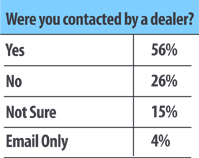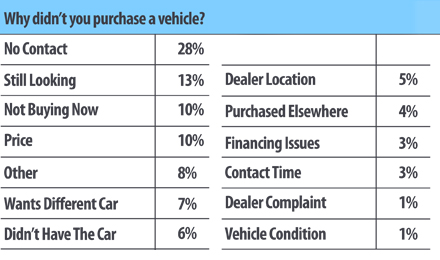
It is an indelible image of the financial crisis: a bird’s-eye view of the backyards of foreclosed houses, their in-ground pools festering with algae and mosquitoes. In Northern Virginia, Marcus Sheridan was in the financial storm.
By early 2009, his company, River Pools and Spas, a 20-employee installer of in-ground fiberglass pools in Virginia and Maryland, had a decline in orders from an average of six a month to barely two. That winter, four customers who had planned to install pools costing more than $50,000 each demanded their deposits back. For three consecutive weeks, the company overdrew its bank account.
Around this time, Mr. Sheridan began to overhaul his marketing. The company had been spending about $250,000 a year on radio, television and pay-per-click advertising. It would now cut the budget to about a tenth of that and focus on generating sales through informational blog posts and videos, what has become known as content marketing. But Mr. Sheridan took an unconventional approach to his content.
As a result, River Pools has recovered to exceed its peak pre-2007 revenue, and Mr. Sheridan, a 35-year-old father of four, has become something of a Web marketing guru. While he still owns a 33 percent interest in the pool company, his partners manage it day to day while he concentrates on his new venture, TheSalesLion.com. He recently spoke about his marketing approach in a conversation that has been edited and condensed.
Q. Take us back. How did you save your company?
A. I just started thinking more about the way I use the Internet. Most of the time when I type in a search, I’m looking for an answer to a specific question. The problem in my industry, and a lot of industries, is you don’t get a lot of great search results because most businesses don’t want to give answers; they want to talk about their company. So I realized that if I was willing to answer all these questions that people have about fiberglass pools, we might have a chance to pull this out.
Q. What was the first question you answered?
A. The question I was always asked within the first two minutes of talking to customers was, How much does a fiberglass pool cost? Pool installers are like mattress or car dealers — we hate talking about how much a pool costs until we have you in person because there are so many options and accessories we want to sell you. As a result, pool companies never mention price on their Web sites. But I said, I don’t care what the question is, we’re going to answer it.
Q. Did you actually tell people the price of a pool?
A. No — because I couldn’t. But see, that’s the magic behind this. Google’s search engine doesn’t really care if we answer the question. It’s just looking for companies that are willing to address the question. So I said in that article, there are a ton of options, so it depends, the price can range anywhere from $20,000 to $200,000 and a lot of our customers end up between $40,000 and $80,000. And that was enough. Within about 24 hours of writing that article, it was No. 1 for every fiberglass-pool, cost-related phrase you could possibly type in. And because I have analytics, so far to this day, I’ve been able to track a minimum of $1.7 million in sales to that one article.
Q. What was the next question?
A. People used to ask me all the time, “Marcus, I’ve been hearing that fiberglass pools have all sorts of problems and issues. So what are the problems and issues?” Of course, they’d been talking to a concrete pool guy, but it doesn’t matter where they got it, now they have the question. So we wrote an article about the problems with fiberglass pools and specifically came right out and said: Here are the issues. Here are the benefits. You decide. Now, when you go in and type anything about fiberglass issues and problems, you’re going to see the River Pools Web site and you’re going to think, “Oh my gosh, these guys are so honest.”
Q. Anything else?
A. In most industries, there comes a time in the sale process where the customer turns to you and says, “O.K., I like you, but who are some of the other good companies that do this?” Half the time it’s a test, because people know who our competitors are because they can find them in .5 seconds online. Most contractors avoid the question. They say, “Oh, we don’t really have competition.” But because I was asked that question so often, I decided to answer it. I wrote a blog post about the best swimming pool builders in Richmond, Va., one of our main service areas.
Q. Where were you on the list?
A. I wasn’t on it.
Q. You weren’t?
A. No, because the moment I put my name up there I would lose all my credibility. But here’s the thing. Take the first company on the list, Pla-Mor Pools, a top competitor of ours. If you type in, “Pla-Mor Pools reviews Richmond, Va.,” which of course people do all the time when they’re vetting a company, what comes up? Me! You vet all my competitors, now I’m showing up for all their key words. If you really want to understand the power of inbound marketing, it comes down to this idea: I want to have the conversation at my house.
Q. Once you wrote a blog post, how much time did you spend promoting it on Twitter and Facebook?
A. I didn’t. Dude, that one article on price has never been tweeted. It’s never been Facebooked. I’m not saying social media doesn’t help, but it’s nowhere near what people think. The only metric that really matters is total pages viewed. Here’s a statistic for you: If somebody reads 30 pages of my River Pools Web site, and we go on a sales appointment, they buy 80 percent of the time. The industry average for sales appointments is 10 percent. So, our whole marketing campaign revolves around getting people to stick around and read our stuff, because the longer they stay on our site, the greater the chance they’re going to fall in love with our company.
Q. What do you say to business owners who say they don’t know what to blog about?
A. That’s the dumbest thing I ever heard, and I hear it a lot. What they should be doing is just listening to every single question they get and answering it. In my consulting business the first thing we do is brainstorm what questions the company gets on a regular basis. I’ve never had a company come up with less than 100 questions in 30 minutes.
Q. How do you suggest companies find time to do all of this blogging?
A. Most of the time, they can take the employees they already have talking to customers and turn them into content producers. If you have 25 salespeople, and each one of them writes one post a month, your search is going to be through the roof because that’s a new piece of content every day.
Q. How have your competitors responded to all of this?
A. They still don’t really get it. They’re nice about it. I’ll have one of my best-pool-builder lists come out, and I’ll run into them. And they’ll say, “Hey, man, thanks for including me in that list. I’m not sure why you did it, but thanks.”

 Click.
Click.


